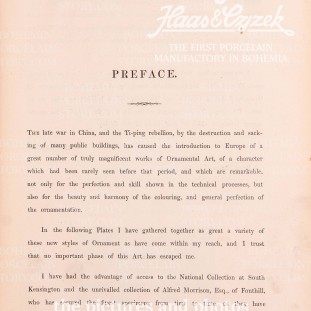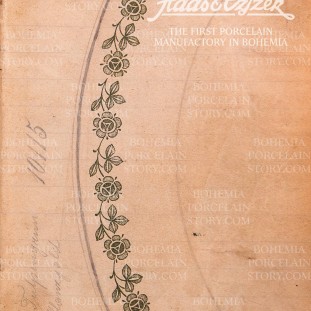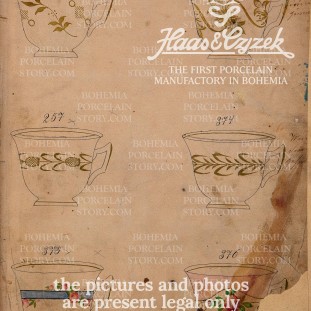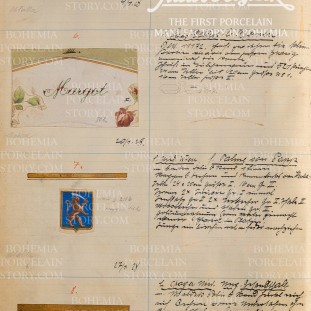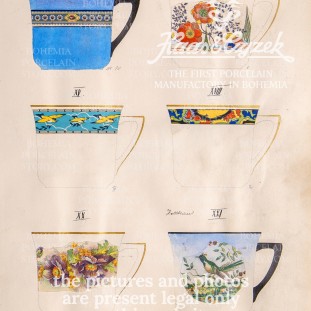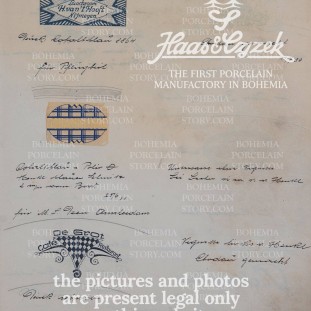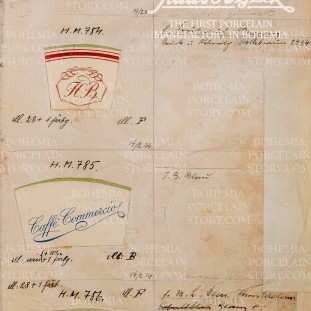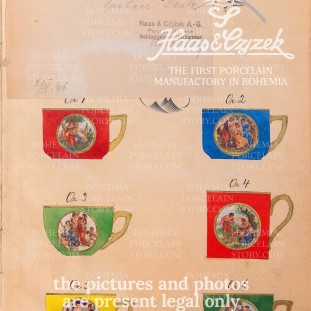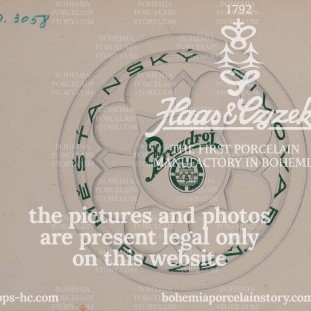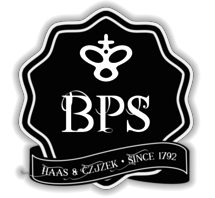
PORCELAIN
STORY
I am global

I am global

The project BohemiaPorcelainStory.com represents a unique historical model of original Czech porcelain design, artistically captured by its own description of creation and the decorative concept. Here you will find many global companies, their symbols and brands, and some existing companies, hotels, restaurants and cafés, many of which, by their significance, now exceed the essence of their original not merely commercial purpose. Haas & Czjzek 1792™, the family brand that produced the most porcelain in the entire Habsburg (monarchy and whose noble wrinkles undoubtedly express its irreplaceable influence on the beginning of the Czech porcelain era, is now revealing, for the first time in its long tradition, its work records through design books, swatches and a practically arranged portfolio of its valued customers and their specific orders, even in stages of the production process and the final basis of all production. All this is in the form of exceptionally high quality digital photographic reproduction.
It is a historical legacy of the famous cradle of utilitarian and custom porcelain, which thus comes to life and provides everyone with a real and unbiased insight into the history of the design, production and decoration of the oldest Czech porcelain factory.






Haas & Czjzek models and design are defined mainly by their practical adaptation and world-class quality, the aspect of detail in the development of each product and the preservation of the original considered idea of the element. All this in an unsurpassed visual structure and a clear record of creation, including many other rare moments that can be discovered in the authenticity and romance of the lines of the time.
All this in an unsurpassed artistic structure and a clear record of the creation, including many other rare moments that can be discovered in the authenticity and romance of the lines of the time.
Our goal is to present the development stages of well-known and less well-known products of the first Czech porcelain name Haas & Czjzek to the world, and thus to adapt to the situation of the present time. It is clear from the beginning that this photo reproduction through named e-books is an extraordinary and highly sought-after content.
Our contacts are here
Yours Haas & Czjzek 1792™


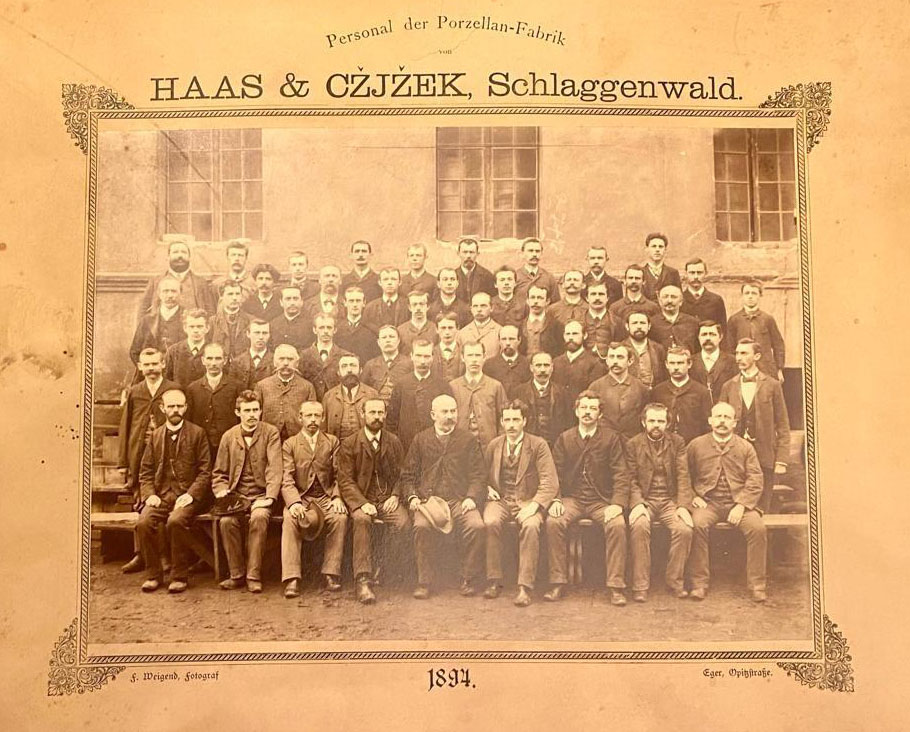


1792 Founding of the family business, which, under the later brand Haas & Czjzek, produced the most porcelain in the entire Habsburg Monarchy.
1793 Attempt to obtain an imperial privilege to produce porcelain, but the request was not granted.
1800 The business was sold to Luise Greiner.
1803 Jan Jiří Lippert, a doctor from Slavkov, son-in-law of Luisi Greiner, enters the company.
1808 Jan Jiří Lippert buys the remaining share of Luise Greiner. After combining his efforts with the mining master Václav Haas, the company begins to prosper under the name "Lippert and Haas".
1812 Visit of Emperor Franz Joseph I. - Privilege to produce porcelain granted.
1817 A happier period begins for the Upper Slavkov factory.
1819 Factory begins to mark its products with a three-digit year.
1837 A copper press is introduced into the technological processes.
1844 Participation of the company at an exhibition in Berlin.
1845 The Second Rococo collection won a gold medal at the General Exhibition of Industrial Products in Vienna.
1851 The Imperial Service, specially designed for the Imperial Court in Vienna, is produced.
1854 Participation of the company at the exhibition in Munich.
1855 Participation of the company at the exhibition in Paris.
1867 August Haas was succeeded by his son Georg and his nephew Johann Czjzek, and the Haas & Czjzek brand appeared for the first time. Four years later, they bought the Portheim porcelain factory in Chodov.
1885 Haas acquires the Mostov castle for his wife Olga and a new family residence is built there.
1899 Both co-owners were awarded titles of nobility by Emperor Franz Joseph I for their merits in the development of porcelain production - Georg Baron Haas von Hasenfels and Johann Czjzek Edler von Smidaich.
1912 Baron Haas von Hasenfels buys Bítov Castle in South Moravia for his son Georg.
1926 An art department for figurative porcelain was established under the direction of the academic sculptor Emil Stefan.
1937 Grand prize for the "art deco" collection presented at the World Exhibition of Art and Technology in Paris.
1938 Sets No. 2370 under the name Trianon, later Maria Theresia, still in production today as Simona and No. 2380 Schonbrunn.
1945 Nationalization on the basis of the Benes Decrees.
1958 The company becomes part of Karlovarský porcelán n.p.
1988 Transformation to Karlovarský porcelán s.p. takes place 1992 Direct sale by resolution of the Government of the Czech Republic to a private investor.
1992 On the occasion of the 200th anniversary of its foundation, the porcelain factory was declared a cultural technical monument and then successfully privatised. A return to the traditional name of Haas & Czjzek. A replica of an Empire cup under the name Johann is modelled. Restoration of the tombstone of George Lippert in the Slavkov cemetery
1997 Gold and silver commemorative medals issued to mark 205 years since the founding of the company. The Diamant coffee set in the production programme follows the unique phenomenon of Czech Cubism.
2011 Closure of production, closure of the factory.
2018 The Haas & Czjzek brand once again passes into the private hands of a Czech family.
2020 Production of small porcelain crosses etc. small batches and limited editions.
